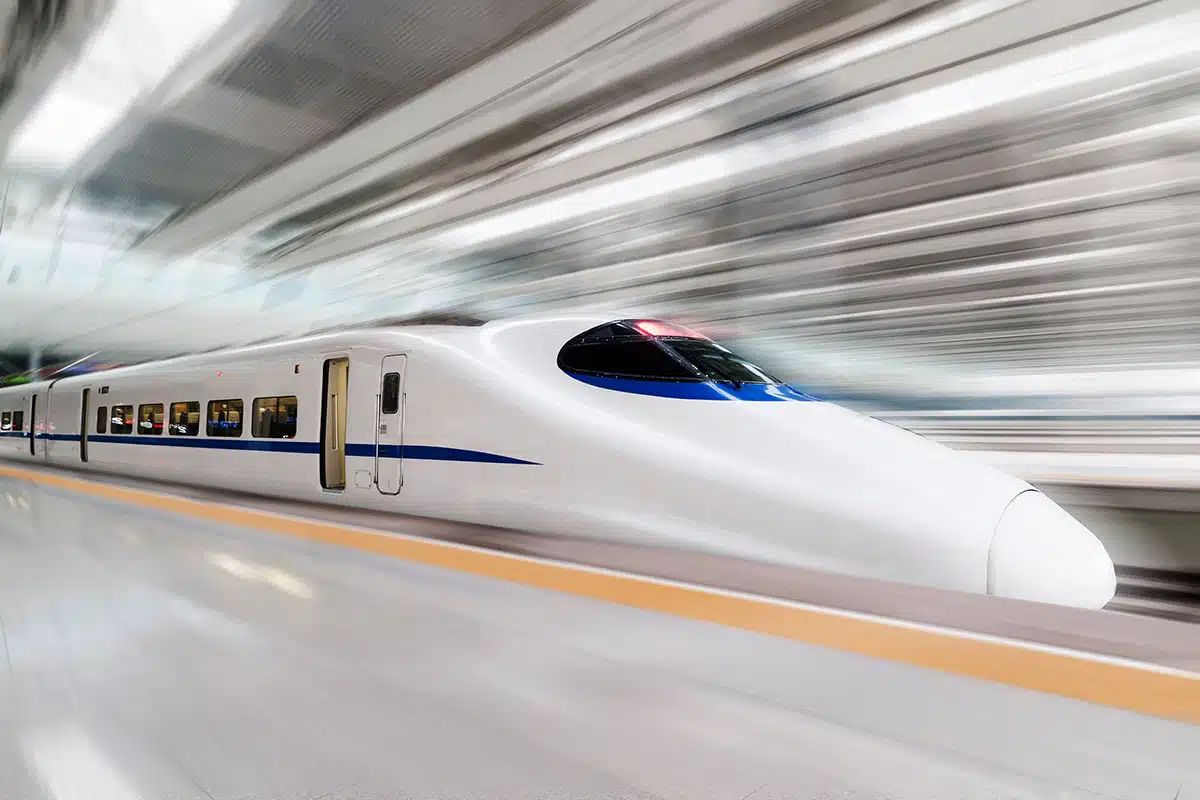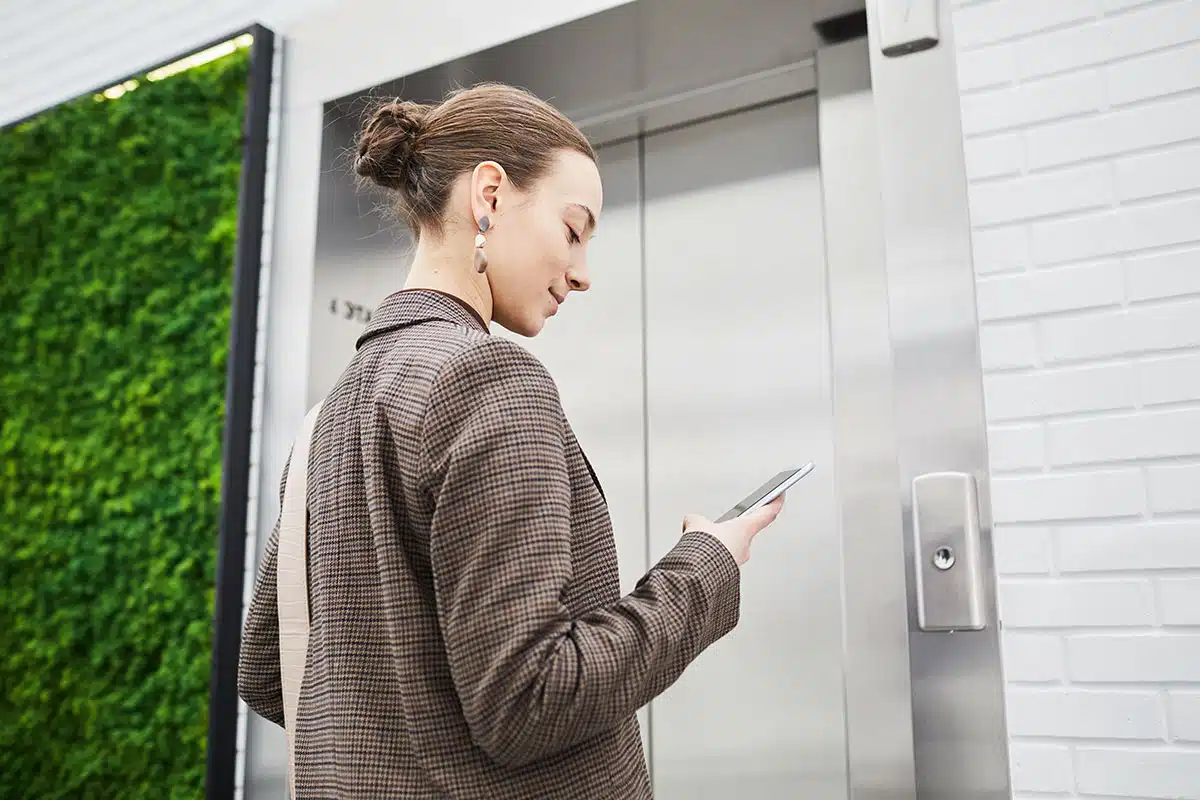Most people don’t give commercial elevator technology much thought, unless they get stuck in a lift or spend several minutes waiting for a car that never arrives. For facility managers, of course, it’s a different matter. For them, elevator function is often front of mind, as the need for safe, quick, and reliable transportation up and down a building is vital for occupants.
Elevators are quite literally at the core of high-rise commercial and residential buildings, and their function is integral to tenant mobility and comfort. Yet despite their vital importance, the fundamental systems and technology behind this transportation mode haven’t radically changed since the first commercial elevator was installed in 1857.
But now that’s about to change.
From Ropes to Magnets
Elevator technology is steadily moving into the digital age, incorporating IoT and AI technologies to make its functions safer, customizable, and efficient.
In 1854, at the Crystal Palace Emporium in New York City, an engineer named Elisha Otis stepped on to an open-air elevator cab. His assistants then hoisted the cab up above the crowd before unexpectedly cutting the rope that was holding it up. But instead of crashing to the ground, the elevator cab stayed where it was, and Otis proved his point: His innovative brake design worked.
In addition to showing off his new invention, Otis’ stunt was designed to set aside public fears that elevators were dangerous (which they certainly had been up to that point). His safety mechanism worked, and now, more than 160 years later, Otis’ invention—the traction elevator—can be found in buildings all around the world.
Since Otis’ famous demonstration, the commercial elevator has undergone multiple improvements that have made it more comfortable and easier to operate. But its fundamental mechanics have remained the same—until now. Today, companies are developing new and revolutionary vertical transportation systems that could render both traction and hydraulic elevators a thing of the past.
TK Elevator (TKE) is at the forefront of making this new technology a reality. Instead of using cables and pulleys like a traction elevator, or the pistons and cylinders of a hydraulic elevator, the company’s system relies on linear drive technology, which harnesses the power of magnets to move the elevator car. This technology, also known as maglev (short for magnetic levitation) is the same technology used in some high-speed trains, such as the Shinkansen—or bullet train—in Japan.
The maglev elevator system works like a continuous train but with the ground-breaking ability to alternate from vertical to horizontal travel. By using swivel points (like those found in a railway turntable) that can rotate the cab when it stops at a floor, the traveler has the option to go in any one of four directions: left, right, up, or down. Routes can be planned and monitored by software, avoiding congestion and bottlenecks.

This new elevator design is a game changer for commercial buildings. With this system, cars can operate independently of one another. This allows more than two cabins per shaft, increasing capacity by up to 50%. Maglev elevators also offer designers and architects greater flexibility in building design, and even enable buildings to be connected via elevator skybridges. Now offices can connect directly to transportation, hotels, or restaurants.
Not only that, but this multi-directional elevator also works with smaller cars that can run simultaneously in a single shaft. And the option of multiple shafts (or tracks) within a building enables even greater choice and mobility.
Another advantage of maglev elevators is their ability to travel far higher than conventional elevators, which are limited to approximately 150 stories. Past this height, the load is too heavy for traction elevators (and not an option for hydraulic elevators, which are best suited to low-rise applications). That’s why, currently, taller skyscrapers add additional shafts, requiring passengers to change elevators midway in order to get to the top of the building.
TKE’s system, called MULTI, is currently undergoing safety tests in the company’s 807-foot-high elevator test tower in Germany. The company has announced plans to install a working system in their U.S. offices in the near future.
Smart Tech and the Commercial Elevator
Enabling elevator cabs to move sideways is undoubtedly the most noticeable shift in elevator technology. But it’s not the only one. Even conventional traction and hydraulic elevators are undergoing significant changes. Elevator technology is steadily moving into the digital age, incorporating IoT and AI technologies to make elevators safer, customizable, and efficient. Here are seven developments to look out for.
Digital Twins
Facility engineers are replacing the clipboard and wrench for an iPad, and this trend is likely to pick up speed as digital twin technology is more widely implemented.
Digital twins are already making an impact in other sectors (such as electronics manufacturing) and could be a game-changer in elevator maintenance as well. Digital twin technology involves creating a virtual replica, or twin, of the physical elevator, allowing technicians to monitor and analyze its performance in a virtual environment.
Digital twins facilitate predictive maintenance by simulating potential problems, enabling technicians to identify and address issues before they manifest in the physical system. This not only reduces downtime but also optimizes maintenance schedules, leading to cost savings and enhanced elevator reliability.
Smart Equipment Monitoring
Advanced sensors are rapidly becoming standard elevator equipment, enabling real-time monitoring and smart diagnostics. These sensors collect data on various components, from motors and cables to control systems, providing a comprehensive view of the elevator’s health. Data can then be analyzed for anomalies, enabling the early detection of potential issues. This improves diagnostic accuracy and allows maintenance practices to shift from reactive to proactive interventions, thus ensuring that elevators consistently operate at peak efficiency.
Traffic Control and Destination Dispatch Optimization
Sophisticated software is now available to optimize elevator traffic, increasing energy efficiency and reducing passenger wait times. Destination dispatch systems are one of these new developments. These systems operate by having occupants input their destination floor at a lobby console, which uses software to group passengers with the same or neighboring destinations, so that they share the same elevator.
By strategically grouping individuals heading to the same or nearby floors, and intelligently assigning elevator routes, this technology minimizes unnecessary stops and decreases wait times—an improvement any passenger can appreciate. The system is also ADA-aware and can accommodate people with disabilities by allocating lifts that are equipped with ramps, have wider doorways, and will hold the cabin doors open longer.
In addition to reducing passenger wait times, this same software reduces elevator energy consumption by managing traffic flow during peak usage intervals. Motion, temperature, and vibration sensors gather occupancy information, enabling AI software to predict which floors will be busy at any given time. By monitoring this real-time data and adjusting elevator availability and location, these new systems can mitigate unnecessary stops and adapt to passenger demands, reducing both occupant travel time and energy consumption.
Smart Cabin Sensors
Sensors also play a pivotal role inside the elevator cabin, enabling additional energy efficiency and optimizing the user experience. Advanced sensors can detect whether an elevator is in use or idle, allowing for intelligent adjustments to lighting and ventilation. These sensors utilize motion detection technology to identify the presence of passengers, triggering changes in the elevator’s environment. When the elevator is unoccupied, for example, lights are dimmed and the ventilation system is switched to energy-saving mode. These adjustments can significantly reduce energy consumption, without compromising the occupant experience.
Biometrics
The biometric market is expected to grow to $82.9 billion by 2027, and the commercial elevator is sure to be part of this market growth. Cutting-edge biometric systems, such as fingerprint and retina scanners, are already being used in some elevators to confirm identities and grant access to authorized individuals. These systems add an extra layer of building security beyond traditional keycards and passcodes, ensuring that only approved personnel can access specific floors or areas within a building.
Other biometric technologies are on the horizon. Facial, palm print, and even vein pattern recognition technologies are being explored as possible modes of access control for elevators. And as AI continues to advance, it’s expected that biometric systems will become more adaptive and capable of identifying and responding to subtle changes in user biometrics over time—compensating, for example, for a new scar or other facial change an employee might experience. These biometric developments will not only enhance elevator security but also reflect the ongoing evolution toward more seamless and personalized systems.
Voice Recognition
AI advancements in language processing make voice recognition a promising user interface technology—one that can certainly enhance elevator functionality. By allowing users to control elevator functions, provide building information, and answer questions in a hands-free manner, this technology could be particularly beneficial for individuals with mobility challenges, or anyone carrying packages.
There are challenges, however. Voice commands are sometimes processed inaccurately, especially in noisy environments. There are also privacy and data security concerns. As with any AI technology, the success of voice recognition in elevators hinges on continuous improvement, addressing these challenges, and ensuring a balance between convenience and user privacy.
Virus Mitigation
Given the safety and reliability of modern elevators, the greatest danger they pose to occupants is likely viral. Businesses are aware of this and are taking steps to mitigate this health issue. While it’s not possible to ensure that elevator cabins are 100 percent virus free, new technologies make it possible to significantly reduce viral transmission.
In addition to biometric devices that enable voice and face recognition, there is software available that lets elevator occupants use their smart phones to select the floor they want, eliminating the need to touch a public panel. And even the button panels themselves are becoming touchless. Screens are being developed that incorporate infrared sensors in the interface, allowing passengers to select a floor by simply hovering a finger a few centimeters in front of the panel. And for areas where touchless screens are not viable, the commercial elevator of the future will be fitted with walls and handles that are made from natural antimicrobial materials such as copper.
Finally, thanks to research by NASA, air purification systems (some of which use photocatalytic oxidation) have been approved by the FDA and are now being incorporated into elevator cabins.

The Commercial Elevator Is Leveling Up
Once Elisha Otis convinced the public that the commercial elevator was safe to use, it quickly transformed the urban landscape. Structures could now reach up towards the sky, enabling taller office buildings. Even residential real estate was turned on its head, as the cheap apartment at the top of the stairs became the desirable penthouse with a view away from the smells and noises of the city.
Now innovative technologies appear set to make similar radical changes to the commercial elevator. In the near future, both office employees and apartment dwellers will have the ability to move horizontally as well as vertically, and for greater distances than currently possible. This development could, conceivably, allow you to move from your office, up to and across a skybridge to your apartment building, then down to your apartment’s floor—without ever leaving the elevator cabin. That change in living would likely be as significant as the one Elisha Otis ushered in when he stepped on to his elevator platform in 1857.